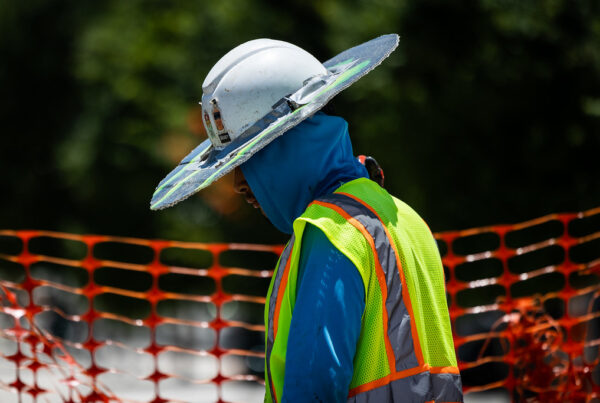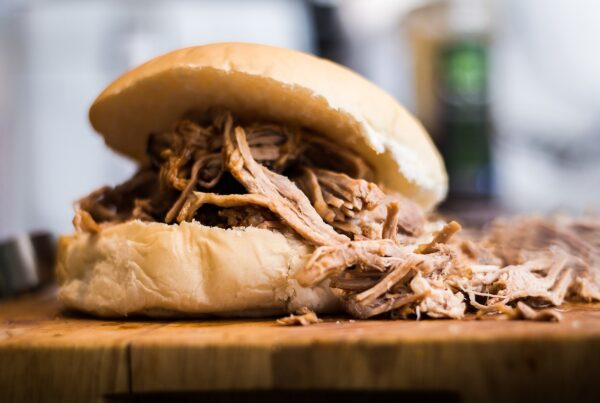From Texas Public Radio:
It’s a transformative project so big it’ll stretch all the way from Austin to San Antonio. But it won’t be powered by gasoline or run on rails. And to traverse it, it’s your feet that will do most of the work.
It’s called the Great Springs Project, a 110 mile trail that will start at Barton Springs in Austin and will go on to San Marcos Springs, then on to Comal in New Braunfels and then at the Blue Hole in San Antonio.
While each of those Springs are located in cities, that trail’s primary path will run in the hills north and northwest of them, in the Hill Country.
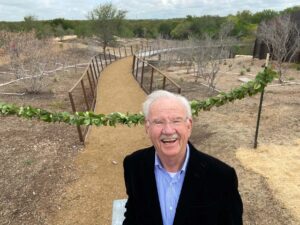
Phil Hardberger all smiles at the southwestern entrance to the Sky Walk on the Land Bridge.
Jack Morgan
“We wanted something in Texas that would resemble in concept to the Appalachian Trail and Pacific coastal trails, and Texas doesn’t really have anything like that,” said former San Antonio Mayor Phil Hardberger, a member of the GSP board.
Hardberger is known for playing large roles in re-creating the Museum Reach stretch of the San Antonio River, the land bridge and the park itself at Phil Hardberger Park. He said the GSP is different.
“It’s historic. It will be beautiful. We’ll protect the water. It’s going to be awfully popular,” he said.
The Great Springs Project has a mission to conserve 50,000 acres over the recharge and distribution zones of Edwards Aquifer, which provide drinking water for cities all along its length.
“So you can hike or bike or recreate outdoors on a trail from the Alamo to the Capitol,” said GSP Chief Development Officer Emma Lindrose-Siegel.
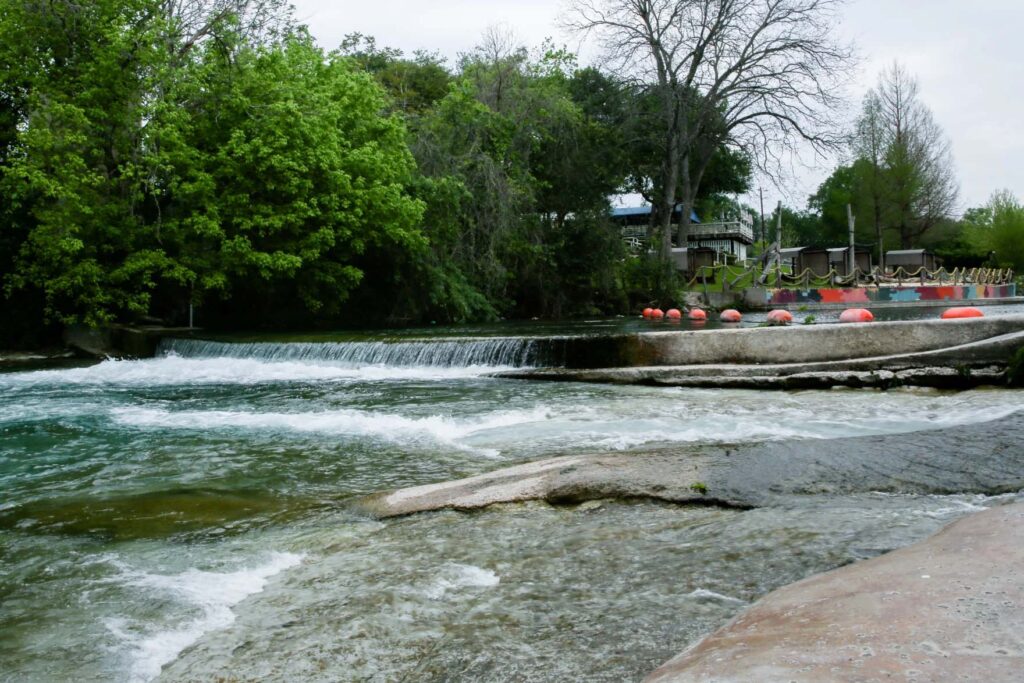
Hinman Island Park, New Braunfels.
Jennifer M. Ramos
Right now the GSP is pushing for conservation easements and buying property to secure land while they still can afford it. She said the pressure for ranchers to sell their property has never been greater.
“We talk to landowners who have a stack of letters a couple inches high from developers who are interested in buying their land or their ranches to turn it into a future housing development,” Lindrose-Siegel said.
So what’s the whole thing slated to cost? $150 million for the trail and $750 million for the land conservation.
Lindrose-Siegel compared that to the cost of a new hospital.
“This is something that’s totally essential and needed for this region and the community,” she said. “If we don’t build the trail now, we’re going to miss the opportunity. We’re going to miss the window to do it.”
Hardberger pushed hard against skeptics when the city and county paid to completely re-do the Museum Reach stretch of the San Antonio River. In the early 2000s, that section of the river was an overgrown, blighted, even dangerous area.
“I remember when we were building it, the critics would say that’s going to cost millions of dollars,” Hardberger said. “And I said, ‘yes, it is going to cost millions, but it’s going to bring in billions.’ After the first year, there was an economic impact on this city of $2.3 billion in year one.”
While the Museum Reach and the Great Springs Project aren’t equivalent projects, San Antonio bicycle activist Jeff Moore said there are many ways to measure success of these quality-of-life projects.
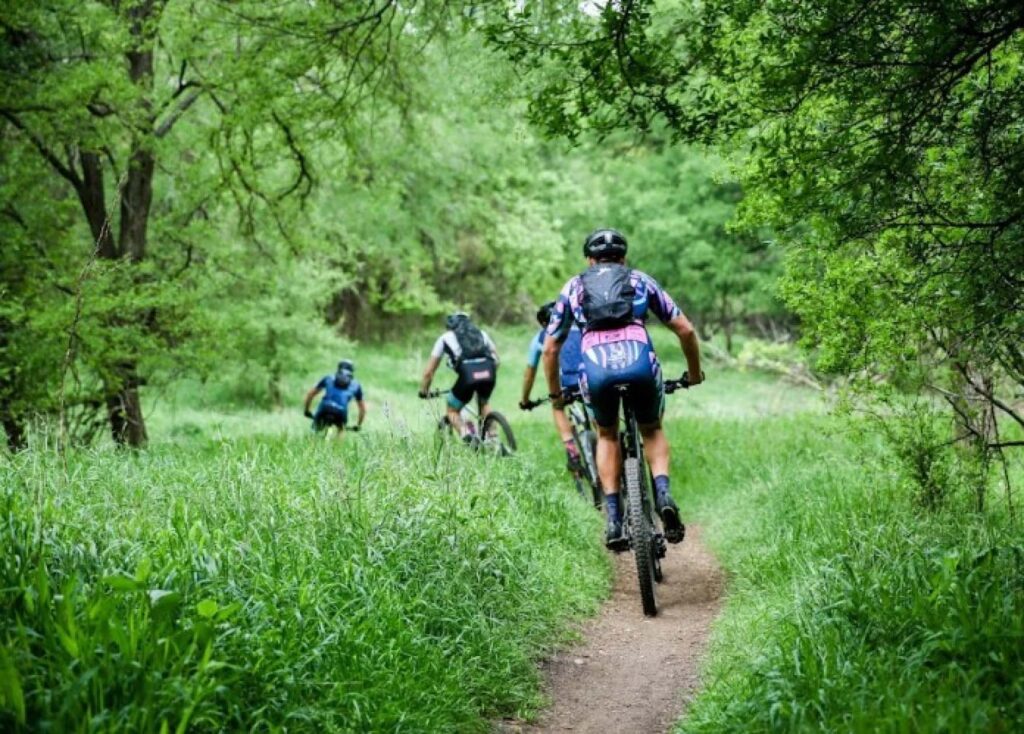
Bicyclists on an existing stretch of trail.
Jennifer W. Ramos
“I always talk about that in regards to health — physical health, mental health, emotional health,” Moore said. “But also there’s going to be an economic outfall from this. There’ll be small bed and breakfasts that pop up, there’ll be breweries, there’ll be restaurants. It’ll help improve the value of the real estate all along this area.”
Moore runs SA-TX Social Ride, a once-a-week riding club that takes thematic rides in the city’s core. He sees the GSP for its potential for Texans all along its route.
“I’ve seen so many people turn their health around through cycling, their physical health, their emotional health, their well-being, their outlook on life. All sorts of positive things,” Moore said.
Lindrose-Siegel said paying for it is not as daunting as it first sounds.
“The funding for this project is really a patchwork of federal, state, and local funds. There is bond money, There’s a lot of opportunity to fund it,” she said. “And of course, private philanthropy is part of that, too.”
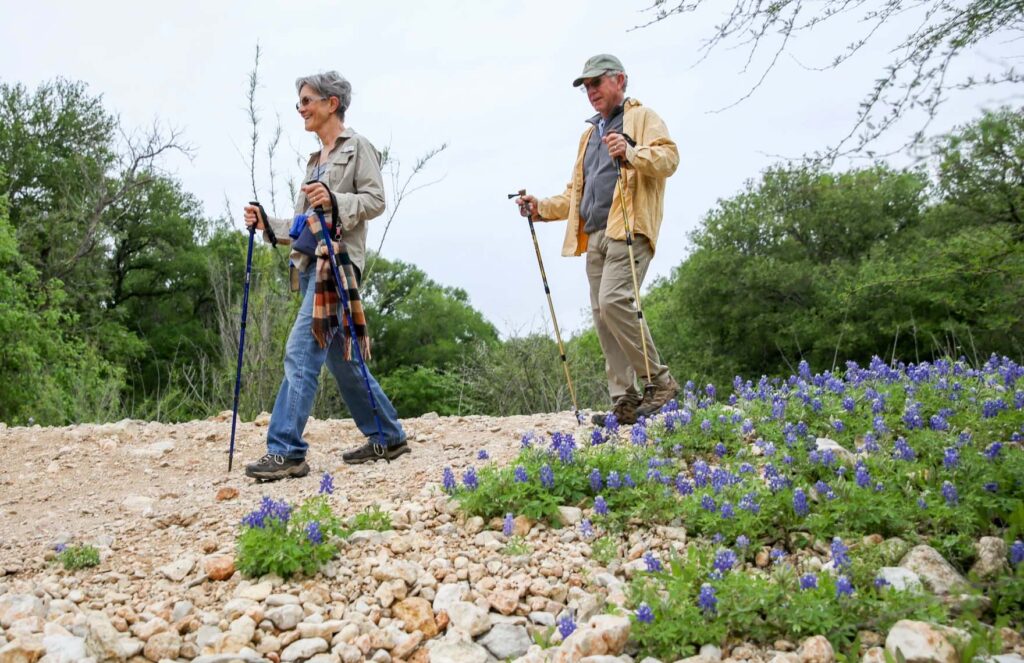
Hikers walk along Purgatory Creek.
Jennifer W. Ramos
In addition to all that, Hardberger predicts that the Texas legislature will also step up to the plate and deliver.
“I think there is a feeling now in Texas that spreads across both parties — and those that hate both parties — that we need to spend more on our natural spaces,” he said. “I sense there’s a climate there and there has been a lot of conversation about [how] we need more state parks. We’re under-parked as a state, and that more money now is being authorized to build more parks.”
And in fact, it’s not like the trail still needs 110 miles to be built. Lindrose-Seigel said they’re well on the way.
“About a third of the trail has already been built. Another third of the trail is either funded or included in a transportation plan as a priority,” she said. “And then the other third, we are in negotiations with landowners right now or working with cities and counties to get trail right of way.”
Jeff Moore thinks people will use it in many different ways.
“It’s a great opportunity to ride your bike from San Antonio to New Braunfels. That would be a really easy 20 miles one way to have lunch and ride back,” Moore said. “Or if you’re more adventurous, ride all the way to Austin. There will definitely be lots of cyclists that will be doing that.”
Hardberger is confident the project will find funding, and as important, people, to complete it.
“This is a good time for a lot of people to get involved. It’s a natural project for volunteers, people that want to help, people that love the land, people that want to be healthy themselves,” Hardberger said. “And just the creation of beauty, which gets destroyed all the time by people building things and pouring concrete and tearing up things, cutting down our trees. So there has to be a counter force to that.”
Target date for completion is on Texas’s bicentennial year, 2036.





